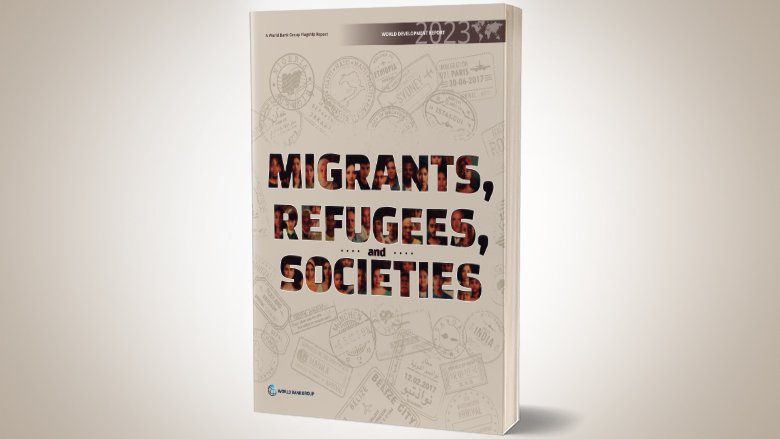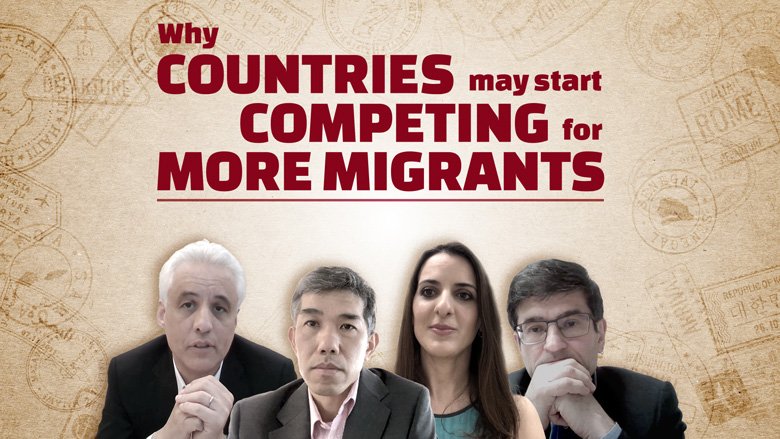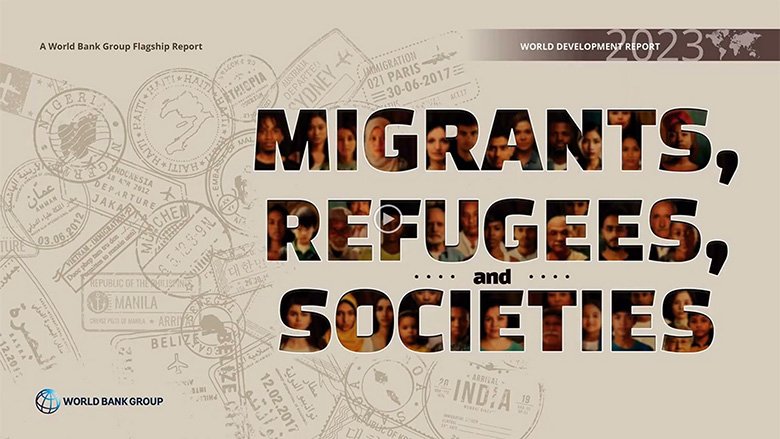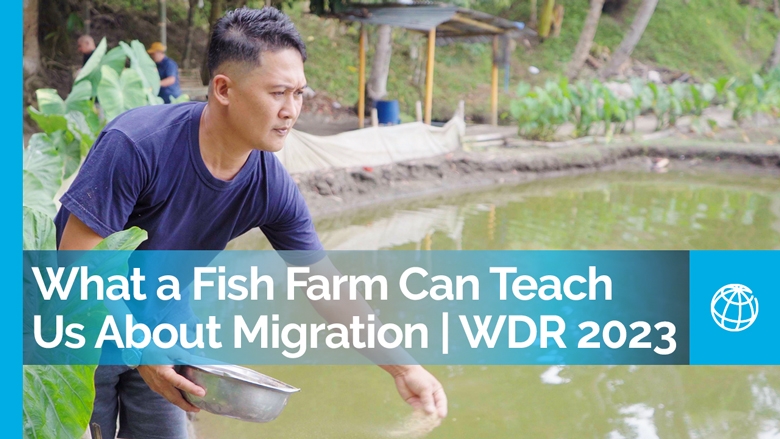MODULE DESCRIPTION
How will demographic trends shape the future of migration patterns? This course, presented by the Development Economics Research Group, will provide an overview of demographic trends across the world and will take a deep dive into the 2022 Revision of World Population Prospects produced by the Population Division of the UN’s Department of Economic and Social Affairs. The course will discuss the implications of current and projected demographic trends on migration patterns, with an emphasis on what the demographic divergences between high-fertility, youthful countries and low-fertility, aging countries imply in terms of migration.
LEARNING OBJECTIVES
Upon completion of this module, participants should be able to:
- Have good knowledge of demographic trends across the world.
- Understand key terminology used: e.g. population pyramids, demographic dividends, youth bulge, etc.
- Understand the data, methods, and assumptions underlying demographic data and projections.
- Be able to reproduce age pyramids, fertility trends, dependency ratios, and other demographic trends for any country or region.
- Be familiar with the implications of these trends for countries and for global labor markets.
AGENDA AND OUTLINE OF LECTURES
The course will combine presentation and discussion of statistics constructed from population data and hands-on exercises using these same data. It will be complemented with a discussion of the policy implications of these demographic trends.
The course consists of 7 two-hour lectures over 2–2 ½ days.
A synthetic agenda is provided below:
- Overview of demographic trends across the world
- The 2022 Revision of the World Population Prospects (Part I)
- The 2022 Revision of the World Population Prospects (Part II and III)
- Policy implications I: the demographic transition
- Policy implications II: the demographic divergence and migration
- Policy implications III: the case of Africa
Lecture 1: Overview of demographic trends across the world
Participants will be given an overview of demographic trends across the world and be introduced to important concepts such as age pyramids, total fertility rates, dependency ratios, etc.
Mandatory reading:
- 2023 WDR “Migrants, Refugees, and Societies”, Chapters 4, 5, and 6.
Additional reading:
- United Nations, Department of Economic and Social Affairs, Population Division. World Population Prospects 2022: Ten Key Messages. July 2022.
- United Nations, Department of Economic and Social Affairs, Population Division. World Population Prospects 2022: Summary of Results. UN DESA/POP/2022/TR/NO. 3. July 2022.
Lecture 2: The 2022 Revision of the World Population Prospects (Part I)
This lecture will cover the main demography-related databases generated by various agencies that would be of interest for analytical purposes. A description of the various scenarios generated by the UN Population division would be discussed along with its implication for population projections.
Mandatory reading:
Additional reading:
- Stein Emil Vollset, Emily Goren, Chun-Wei Yuan, Jackie Cao, Amanda E Smith, Thomas Hsiao, Catherine Bisignano, Gulrez S Azhar, Emma Castro, Julian Chalek, Andrew J Dolgert, Tahvi Frank, Kai Fukutaki, Simon I Hay, Rafael Lozano, Ali H Mokdad, Vishnu Nandakumar, Maxwell Pierce, Martin Pletcher, Toshana Robalik, Krista M Steuben, Han Yong Wunrow, Bianca S Zlavog, Christopher J L Murray. "Fertility, mortality, migration, and population scenarios for 195 countries and territories from 2017 to 2100: a forecasting analysis for the Global Burden of Disease Study." The Lancet 396, no. 10258, October 2020, pp. 1285–1306.
Lectures 3 and 4: The 2022 Revision of the World Population Prospects (Part II and III)
In these lectures, participants will have hands-on exercises to gain a better understanding of the population data. They will construct age pyramids, fertility trends, dependency ratio trends and other important demographic statistics. They will also produce projections under various scenarios so to better understand the importance of some modelling assumptions. Participants will construct a demographic profile of a country of their choices and discuss the policy challenges associated with the population dynamics.
Lecture 5: Policy implications I: the demographic transition
In this lecture, participants will be given an overview of the factors underlying the demographic transition happening in a large number of countries throughout the world. It will also discuss active population control policies and what their documented impacts have been.
Mandatory reading:
- Doepke, Matthias, Anne Hannusch, Fabian Kindermann, and Michele Tertilt, “The Economics of Fertility: A New Era”, in Handbook of the Economics of the Family, Volume 1: edited by S Lundberg and A Voena, Elsevier B.V., March 2023, pp.151–254.
Additional reading:
- “The Long, Good Life: Demographics and Economic Well-Being”, Finance and Development, vol. 57, no.1, March 2020, pp.4–16, 20–25, 31–34
- Doepke, Matthias. “Gary Becker on the Quantity and Quality of Children.” Journal of Demographic Economics, vol. 81, no. 1, March 2015, pp. 59–66.
Lecture 6: Policy implications II: the demographic divergence and migration
Lecture 6 looks at the policy implications of demography, whether countries are aging or experiencing a youth bulge. What are the implications of diverging demographic trends for both domestic and global labor markets?
Mandatory reading:
- 2023 WDR “Migrants, Refugees, and Societies”, Chapter 3.
Additional reading:
- Fargues, Philippe. International Migration and the Demographic Transition: A Two-Way Interaction. International Migration Review 45, no. 3, September 2011, pp 588–614.
- Peri, Giovanni. Immigrant Swan Song. Finance and Development, vol. 57, no.1, March 2020, pp.26–29. Accompanying podcast here.
- Munz, Rainer. Demography and Migration: An Outlook for the 21st Century. Migration Policy Institute, Policy Brief No .4, September 2013
Lecture 7: Policy implications III: the case of Africa
In this lecture, focus will be on Africa as the continent is experiencing demographic growth while most of the rest of the world is seeing fertility rates falling below replacement and population growth slowing if not becoming negative. What are the implications of Africa’s youth bulge? What to make of the great demographic divergence?
Mandatory reading:
- 2023 WDR Companion Report for Africa (forthcoming)
Additional reading:
- May, John F. and Jean-Pierre Guengant. Demography and economic emergence of Sub-Saharan Africa. Académie Royale de Belgique, 144 p. (Pocket Book Academy), 2020








